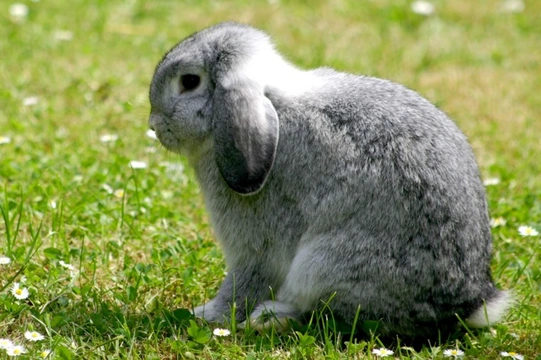
Why pet rabbits cannot be kept alone
Rabbits are highly social animals, and they need to be kept together in pairs or potentially small groups. One rabbit kept alone will never be happy nor able to exhibit their natural behaviours; even a house rabbit that you give lots of attention to.
This article will tell you how rabbits live naturally, why pet rabbits can’t live alone, and what to consider when deciding how many rabbits to get. Read on to learn more.
How do rabbits live in the wild?
In the wild, rabbits form quite complicated social groups and sometimes live in extended family configurations; and they’re actually quite territorial towards rabbits outside of their accepted groupings too.
Generally, a cooperative or family of rabbits might consist of anything from two adult rabbits (usually a male and female breeding pair) up to as many as eight, and potentially young kittens (baby rabbits) too.
This communal style of living helps to increase the chances of survival of the grouping as a whole, and fulfils both their practical and social needs too.
Strange rabbits and unconnected groups do not share warrens, resources, or general areas, and while pet rabbits need company and cannot be kept alone, two strange adult rabbits put together without proper introductions and time taken will almost certainly fight, particularly rabbits of the same sex.
How many rabbits should I get?
If you’re thinking of taking on a pet rabbit, you need to think in the plural there and get two. Possibly more, but two is a good start and means you won’t be biting off more than you can chew. A male and female (neutered) pair is a common configuration.
Getting two rabbits rather than three or more also means you’ll have less of a challenge providing enough living space; rabbits need far more living space than many people think, and a hutch is not enough on its own. Rabbits also need a fairly large outdoor run and access to grass to graze on if at all possible (and supplementary hay if not, and for night times).
That said, as mentioned earlier on, just because rabbits are highly social and don’t thrive alone doesn’t mean they will always get on with a newcomer; and other than young rabbits, or a male and female that are unneutered (which should be avoided for obvious reasons!) introducing two adult rabbits can take a long time and involve some scuffles.
This means that if you start with a pair of rabbits, one will outlive the other; and you’ll find yourself in a position where you would need to introduce a potentially elderly rabbit to a new companion and manage all that this entails so your first rabbit does not become lonely when they lose their pal.
This means three rabbits is a viable consideration too so that you never (or very rarely) end up with one alone; but for any more than this, you would need a significant amount of space for them, as well as potentially costly runs and accommodations, and plenty of time to give them all enough attention.
Ultimately the choice is yours; as long as you have at least two rabbits, and can provide adequately for all of their needs.
Unneutered rabbits breed like… rabbits.
A vital consideration when you get rabbits is having them neutered. This is firstly for the obvious reasons; a pair of rabbits will produce a lot of additional rabbits in short order. One fertile doe can in fact end up with around 30 babies over the course of one breeding season, and they can conceive again quite literally the same day they’ve had a litter too!
Also, if you keep same-sex rabbits together and they’re not neutered, they will almost certainly fight quite nastily, and so unless you have a plan to breed from a pair of rabbits and have researched this in depth and are sure it’s a good decision, neutering pet rabbits is vital.
Can I keep a rabbit with a Guinea pig?
A couple of decades ago and before this, our understanding of the care and social needs of pet rabbits was far poorer than it is today, and there was a much lower level of awareness of their requirements.
Many pet rabbits were kept alone, and another common configuration was to keep a pet rabbit with a pet Guinea pig, theoretically to provide each other with company.
However, this is not a suitable approach for either species of animals. Rabbits and Guinea pigs are both highly social, but with their own species only. Just because they’re both small and furry doesn’t mean they’re similar in terms of their social needs and behaviours; their communications are different and simply, keeping a rabbit with a Guinea pig instead of another rabbit is no help to either pet, and may result in additional stress on both.
Can house rabbits live alone?
Even if you have a house rabbit that has free range of the home and human company more or less all of the time, this is still no substitute for the company of another rabbit. There is no workaround or exception; in order to thrive, be happy, and exhibit natural behaviours, a rabbit needs to live with at least one other rabbit, and they cannot be kept alone or with another species of pet instead.



